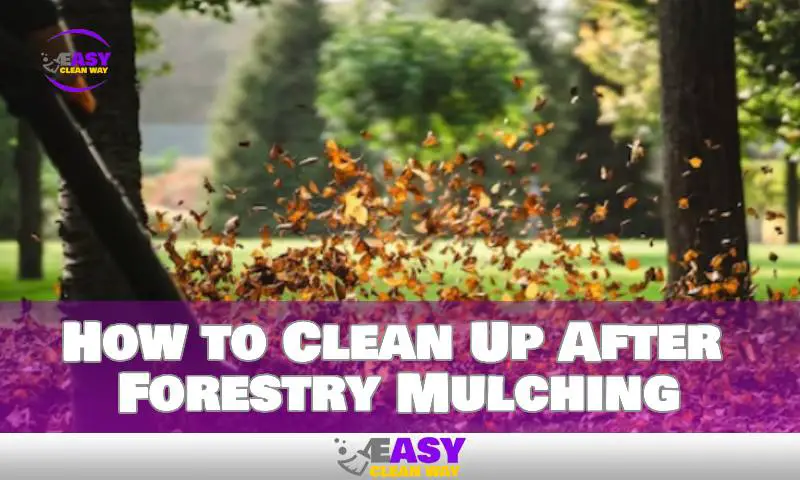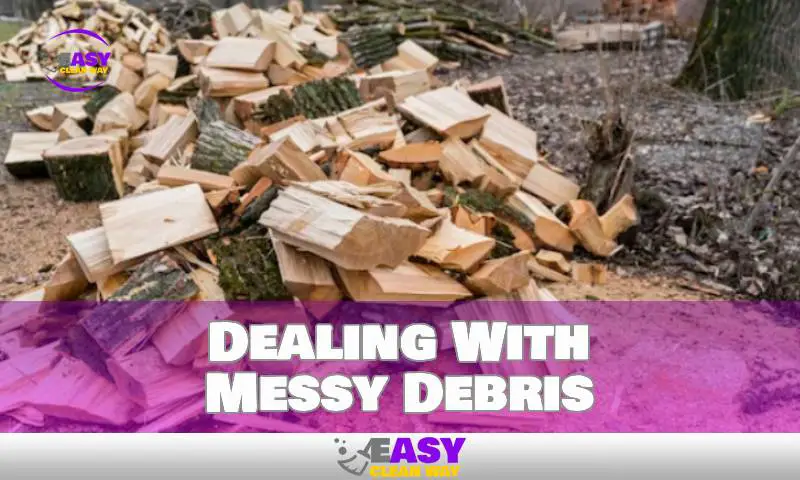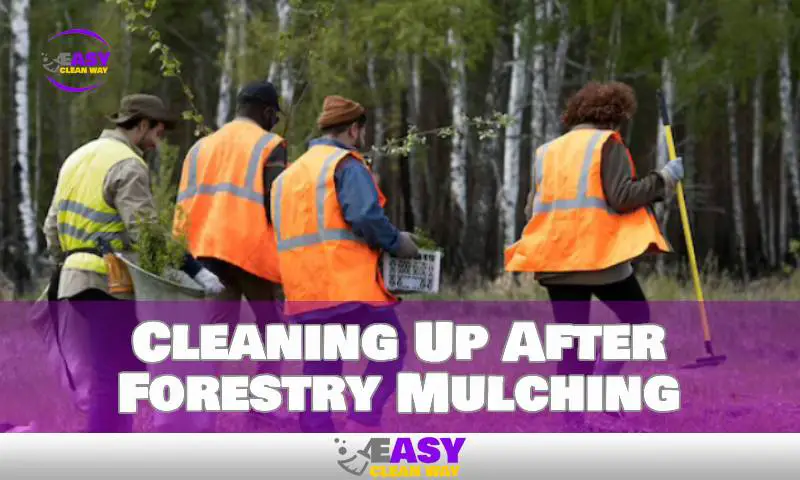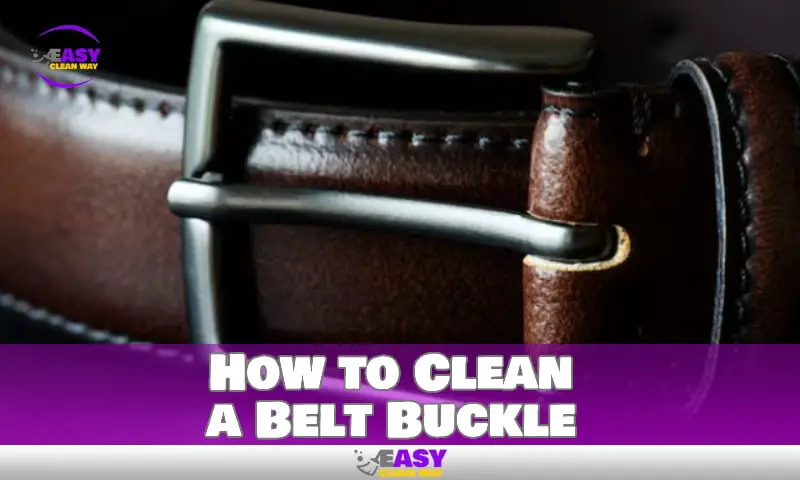
To clean up after forestry mulching, remove any large debris and debris from sprouts and seedlings. Then, smooth the soil and add fertilizer or seed.
Forestry mulching is an eco-friendly way to clear land that involves grinding up trees, brush, and other vegetation into small wood chips. However, after the mulching is done, there is often a mess of debris and vegetation left behind. It’s important to clean up this mess to restore the land to a usable state and prevent the growth of unwanted plants.
In this article, we’ll go over some tips on how to clean up after forestry mulching, including removing debris and sprouts, smoothing the soil, and adding fertilizer or seed to encourage healthy regrowth. So, if you’re ready to tackle your mulch cleanup project, read on!
What Is Forestry Mulching?
Forestry mulching is a land-clearing process that grinds tree trunks, limbs, and brushes into mulch. It is an eco-friendly technique used to remove vegetation from areas where it is not needed. If you’re planning to have forestry mulching done on your property, here’s what you need to know:
Benefits Of Forestry Mulching
- It’s eco-friendly: Forestry mulching is an eco-friendly technique that is free from burning, hauling, and disposal of debris. It also helps prevent soil erosion and increases soil fertility.
- It’s cost-effective: Forestry mulching can save you money in several ways. It eliminates the need for multiple machines, such as bulldozers, excavators, and haul trucks. It also saves on labor costs since mulching is a one-person operation.
- It’s quick and efficient: Forestry mulching is a quick and efficient way to clear land. The forestry mulcher can clear up to one acre per day, depending on the terrain and vegetation.
- It’s versatile: Forestry mulching can be used for a variety of projects, such as clearing rights-of-way, creating firebreaks, and improving wildlife habitats.
Impact Of Forestry Mulching On The Environment
Forestry mulching has several environmental benefits. It helps reduce the amount of waste in landfills by turning trees and underbrush into mulch. It also helps prevent soil erosion by leaving roots and stumps intact.
Forestry mulching is also more efficient than traditional land-clearing methods, which involve burning or hauling debris. Burning releases harmful pollutants into the air, and hauling debris requires fuel and creates emissions.
Moreover, forestry mulching helps preserve natural habitats. It doesn’t destroy the ecosystem but instead creates a healthy environment where wildlife can thrive. By preserving vegetation and protecting the soil, forestry mulching provides a sustainable solution to land clearing.
Forestry mulching is an eco-friendly and cost-effective method for land clearing. It offers numerous advantages over traditional techniques by protecting the environment, improving soil quality, and creating healthy habitats for wildlife.
Dealing With Messy Debris

Understanding The Messy Debris Left After Forestry Mulching
Forestry mulching is great for land clearing as it breaks down vegetation into small pieces. This process might look simple, but it creates a lot of debris and mess that needs to be managed properly. Messy debris typically includes wood chunks, bark, leaves, and stumps that can be hazardous to the environment if left unmanaged.
Environmental Hazards of Messy Debris
Leaving messy debris after forestry mulching can result in environmental hazards such as:
- Soil erosion: The debris cannot retain moisture, leading to soil erosion.
- Water pollution: Messy debris can contaminate water sources with harmful chemicals and excess nutrients, resulting in water pollution.
- Habitat destruction: Leaving wood chunks and stumps scattered on the ground can destroy habitats for various animal species.
Therefore, it’s essential to take proper measures to manage the debris after forest mulching.
Techniques For Managing Messy Debris After Forestry Mulching
Here are some techniques for managing the messy debris left after forest mulching:
- Rake and removal: Raking the debris and removing it from the property is a simple and effective solution. This technique helps prevent soil erosion and habitat destruction.
- Wood chip composting: Using wood chips as compost can be an excellent solution. Wood chips are rich in carbon, which can be beneficial for your garden soil.
- Controlled burns: Controlled burning of the debris is an effective technique to manage the waste and get rid of any weed seeds that might be present in the debris.
- Mulching: Mulching is another technique that can be beneficial for the soil as wood chips gradually break down and add organic matter to the soil.
These techniques are simple and effective solutions to managing the messy debris left after forestry mulching. Implementing these techniques will not only benefit the environment but also make your property look cleaner and more visually appealing.
Essential Tools For Cleaning Up
Forestry mulching is an essential task if you want to maintain your outdoor spaces without destroying them. Once you have mulched your area, you will need to take care of the debris left behind, which can be a daunting task.
Here we will discuss essential tools, safety precautions, and techniques for handling large debris after forestry mulching.
Selecting The Right Tools For The Job
Cleaning up after forestry mulching can be tedious; therefore, selecting the right tools for the job is necessary. Here are some necessary tools for cleaning up after forestry mulching:
- Rakes: You can use rakes to gather smaller debris like leaves, twigs, and branches.
- Leaf blowers: A leaf blower can help you clear out larger debris that might be difficult to lift with a rake.
- Chainsaws: If there are any trees left behind, a chainsaw can help you cut the trunk and branches into smaller pieces.
- Dump trailers: A dump trailer is essential as it can help you haul away the debris easily.
Safety Precautions To Take While Cleaning Up
Cleaning up after forestry mulching can pose safety risks; hence, it’s essential to take precautions to ensure safety. Here are a few safety precautions that you should take while cleaning up:
- Wear protective gear: Thick gloves, sturdy work boots, and eyewear can help protect you from debris and dust.
- Turn off machinery: Make sure to turn off the machinery before cleaning up the debris, and keep children and pets away from the area.
- Watch for hazards: Check for any hazards on the ground, such as stumps, rocks, or uneven ground.
- Lift with care: When carrying debris, make sure to lift with your legs instead of your back to avoid injuries.
Techniques For Handling Large Debris
Handling large debris after forestry mulching can be difficult, but techniques can make it easier. Here are some techniques for handling large debris:
- Dragging: If the debris is too large, drag it with a chain or rope to move it to the dump trailer.
- Loading: If you have a dump trailer, you can easily load the debris by pushing it onto the trailer or using machinery to lift it.
- Cutting: Large, debris-like trunks can be cut into smaller pieces with a chainsaw to make them easier to lift and carry.
Cleaning up after forestry mulching can be time-consuming but with the right tools, safety precautions, and techniques in place, it can be completed effectively and efficiently.
Cleaning Up After Forestry Mulching

Forestry mulching is a sustainable and efficient way of clearing trees and underbrush. Once the process is complete, the site requires cleaning up. Cleaning up after forestry mulching involves removing all the waste, logs, and debris. This step is crucial as it helps prevent potential hazards and promotes soil health.
We will discuss how to clean up after forestry mulching in three phases to make the site safe and healthy again.
Phase One: Clearing Large Debris And Logs
The first step is to remove large debris and logs. Here are the key points:
- Use an excavator or a loader to clear away the larger debris.
- Logs can be piled up to be used for firewood, or they can be hauled away.
- Ensure that rocks, roots, and stumps are removed in this phase to prepare the site for the next step.
Phase Two: Removing Smaller Debris And Grinding
The second phase is removing the small debris and grindings. Here are the key points:
- Use a forestry rake or grapple bucket to collect all the small debris, including twigs and branches.
- Carry out several passes to ensure that all debris is collected.
- Grindings can be used as mulch; it’s best to spread them evenly across the site.
Phase Three: Final Clean-Up And Site Inspection
The final phase is the final clean-up and site inspection. Here are the key points:
- Use a blower to clean the site carefully.
- Inspect the site for any remaining debris, rocks, or stumps.
- Inspect the site for any potential hazards, like exposed roots, and remove them.
- The site is now ready for the final step.
Recycling Mulched Material After Forestry Mulching
Recycling mulched material is environmentally friendly and sustainable; here are the key points:
- The grindings collected in phase two can be used as mulch in gardens and landscaping.
- Mulch helps to absorb and retain water, reduce soil erosion, and reduce weed growth.
- Always check the quality of mulch before using it.
Cleaning up after forestry mulching is a vital step in promoting site safety and healthy soil. By following the three phases mentioned above, you can ensure that your site is neat, clean, and hazard-free. Recycling mulched materials can help promote sustainability and improve soil health.
FAQs
Can Forestry Mulching Damage Plants And Roots?
Forestry mulching can damage plants and roots if not done properly. Ensure proper mulching to prevent damage.
How Long Does It Take For Forestry Mulch To Decompose?
Forestry mulch can take up to 6 months to decompose, depending on the type and thickness.
Does Forestry Mulching Help In Reducing Land Erosion?
Yes, forestry mulching helps reduce land erosion by preserving topsoil and promoting soil health.
Is It Okay To Use Forestry Mulch In Gardens And Landscaping?
Yes, forestry mulch is safe to use in gardens and landscaping as long as it is free from herbicides and pesticides.
Conclusion
Keeping your property clean and maintaining it after forestry mulching is essential not only for the visual appeal but also for the overall health of your land. With the tips and tricks presented in this blog post, you should now know how to take care of your property and keep it looking its best.
Remember to remove debris, create a compost pile, and be mindful of erosion control and soil conservation. You should also consider the advantages of hiring a professional to help with your clean-up efforts. By following these steps, you can ensure that your land is in pristine condition and ready for your next project.
So roll up your sleeves; it’s time to get to work!
Hey there! I’m Wilfred Holguin, your Home Clean Expert blogger. I’m on a quest to help you conquer the clutter in your home and embrace the joys of a tidy home.




